Chelsea have had a busy summer transfer that has been extended till October 5th to accommodate the elongated 2019/20 season. The Blues seemed to have burst into life after three quiet windows due to the transfer ban and no targets immediately available. While they have more than strengthened their forward ranks with the purchases of Hakim Ziyech, Timo Werner, and Kai Havertz, their most important signing has come in the form of 35-year-old former Paris Saint-Germain defender, Thiago Silva.
Chelsea struggled defensively last season with a host of high profile goalkeeping errors and calamitous defending at set-pieces and counter-attacks. Frank Lampard tried a number of combinations but no pairing seemed to convince and perform consistently. This scout report will look at what improvements Silva can bring to this Chelsea side and who might be the best fit alongside him.
Defensive positioning
Lampard’s Chelsea tactics include a very fluid and attacking style of play. A possession hungry team, the current system revolves around a 4-3-3, but have experimented with a 4-2-3-1 and 3-5-2. The use of different formations is to allow Lampard the flexibility to adapt to the opposition and utilise different strengths in the squad. However, their overall structure remains consistent throughout each system. Most of the players are centrally located and the full-backs are the widest players on the pitch in this 4-3-3. This will become even more prevalent with Ziyech and Christian Puslisic expected to be the first choice wide players coming inside.
Now, Chelsea often play with a high defensive line, which means that they will push their full-backs up and the two centre-backs and the deepest central midfielder as the players furthest back. A lot of the defensive problems Chelsea faced came from teams that exposed the spaces in behind, especially when the full-backs pushed up, which forced Chelsea to defend in wide open areas.
The centre-backs were not organised and this caused teams to carve them open in counter-attacking situations. The high line compounded this and while the likes of Antonio Rudiger, Kurt Zouma, and Fikayo Tomori have pace, they weren’t able to nullify the threats often enough. Their fourth-place finish was not without their fair share of mistakes after conceding 54 goals. Nine clean sheets for a side gunning for a top-four position is not good enough.
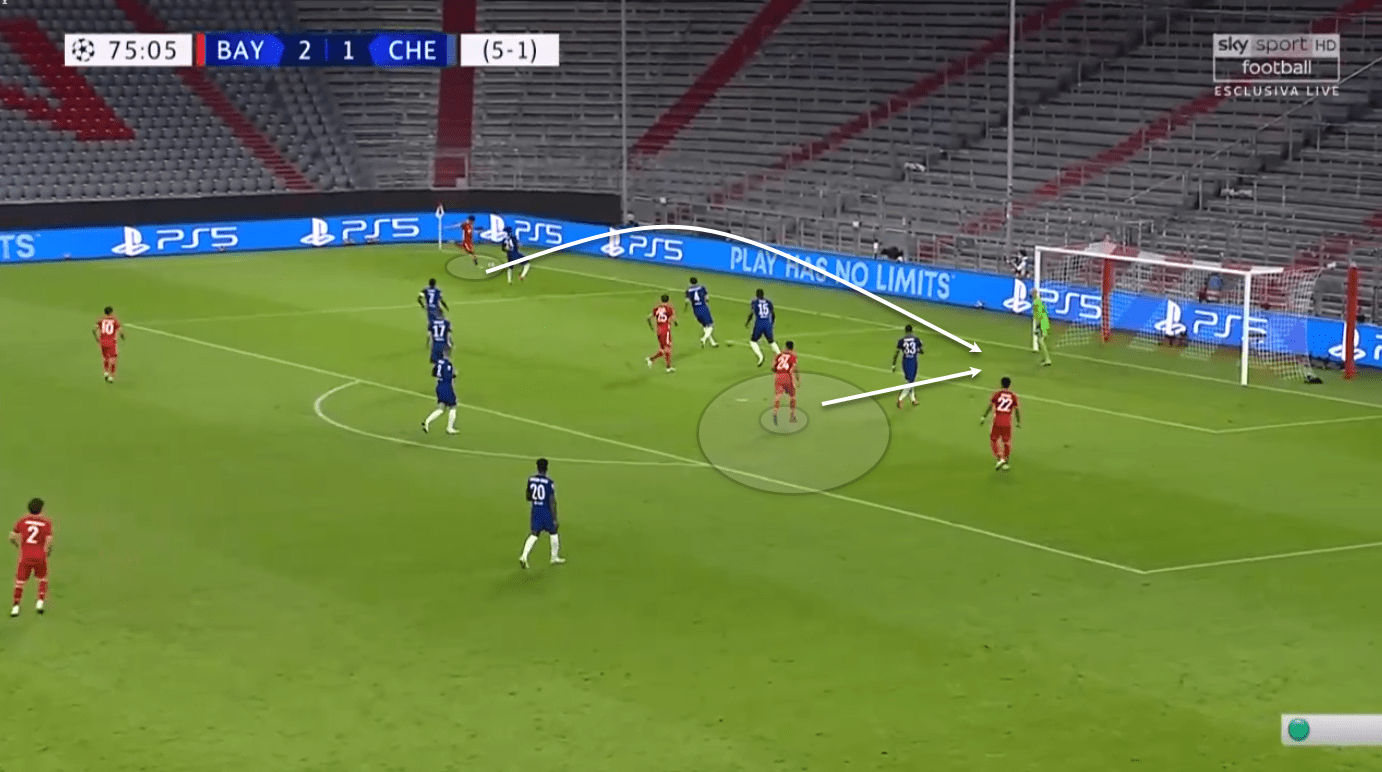
The above example is the type of goals Chelsea regularly conceded last season. Taking an example from their Champions League campaign, we can see Bayern Munich looking to cross the ball into the box where five Chelsea players are in the box, and three to occupy the Bayern attackers. However, the lack of communication, positioning, and organisation in this instance led to the goal as the cross was put in between Zouma and Emerson for Corentin Tolisso to slip through unmarked. The lack of leadership in Chelsea’s heart of defence is telling and confirmed their needs for a new, more experienced central defender.
Now, what Silva brings to the forefront of this Chelsea defence is an excellent sense of positioning. One of the issues with the current crop of centre-backs is not anticipating being at the right place to intercept or stop opposition attacks. Silva brings this in abundance with his intelligence in understanding space which allows him to make tackles or intercept passes and crosses. Though he lacks pace, his positioning makes up for his speed which allows him to set up to become proactive rather than reactive. In PSG’s recent UEFA Champions League run, he was faced against a number of quick and smart attackers like Robert Lewandowski and Serge Gnabry both of whom were terrorising defences throughout Bayern Munich’s run to the final. While Presnel Kimpembe and Marquinhos provided the aggressiveness and pace, Silva played a more cover role where he swept up anything that came in behind and blocked any potential crosses and passes.
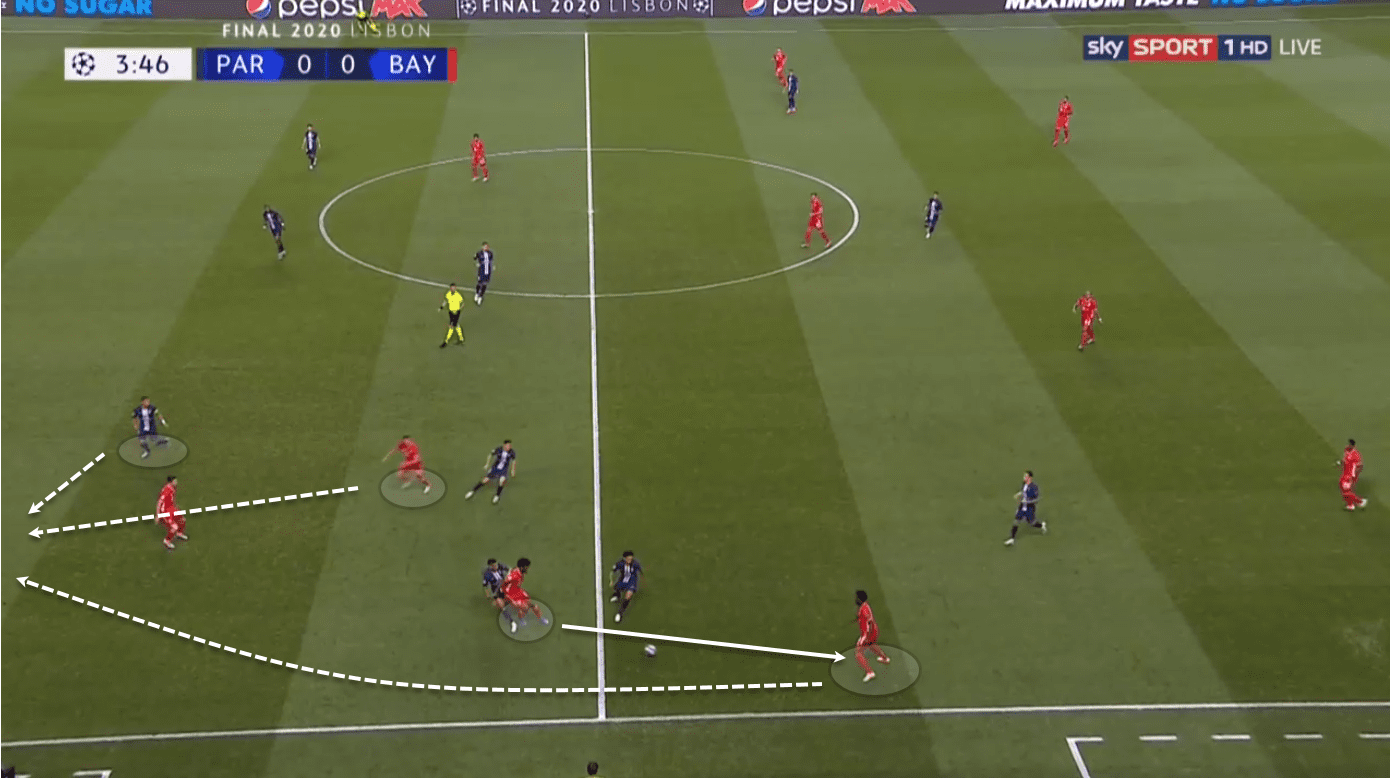
Taking an example from the UEFA Champions League final, we can see Bayern building up an attack down the left-hand side with Kingsley Coman and Alphonso Davies combining with a late run coming in from Thomas Muller in midfield. Silva recognises the danger, though Lewandowski is closer to him, the threat posed by the onrushing Muller is what Silva is alert to. He makes the early run in behind and anticipates where the Davies pass will land where he manages to stop the attack.
What was most important was Silva’s positioning, to begin with. It allowed him time to anticipate and react to attackers movements and ensure he has time to make a defensive action. This sort of intelligent defending is something that Chelsea lacked last year with more hopeful stops than anticipated movements. Silva averaged 5.87 interceptions and 3.97 defensive duels per 90 minutes last season with a 71.9% success rate. Though the lower duel rate is because of PSG’s immense possession statistics in most games, his success rate is a clear indication of his decision-making. He gets himself into positions to ensure he has the best chance to win his duel.
Taking a second example this time against Atalanta in the quarterfinals of the Champions League, we can see Silva marshalling his defensive partner to mark Duvan Zapata closely all while he positions himself to get in between the player and any potential cross in. He constantly ball watches and checks the striker’s movement over his shoulder. He successfully clears the cross but sort of spatial understanding becomes extremely vital to their defensive success.
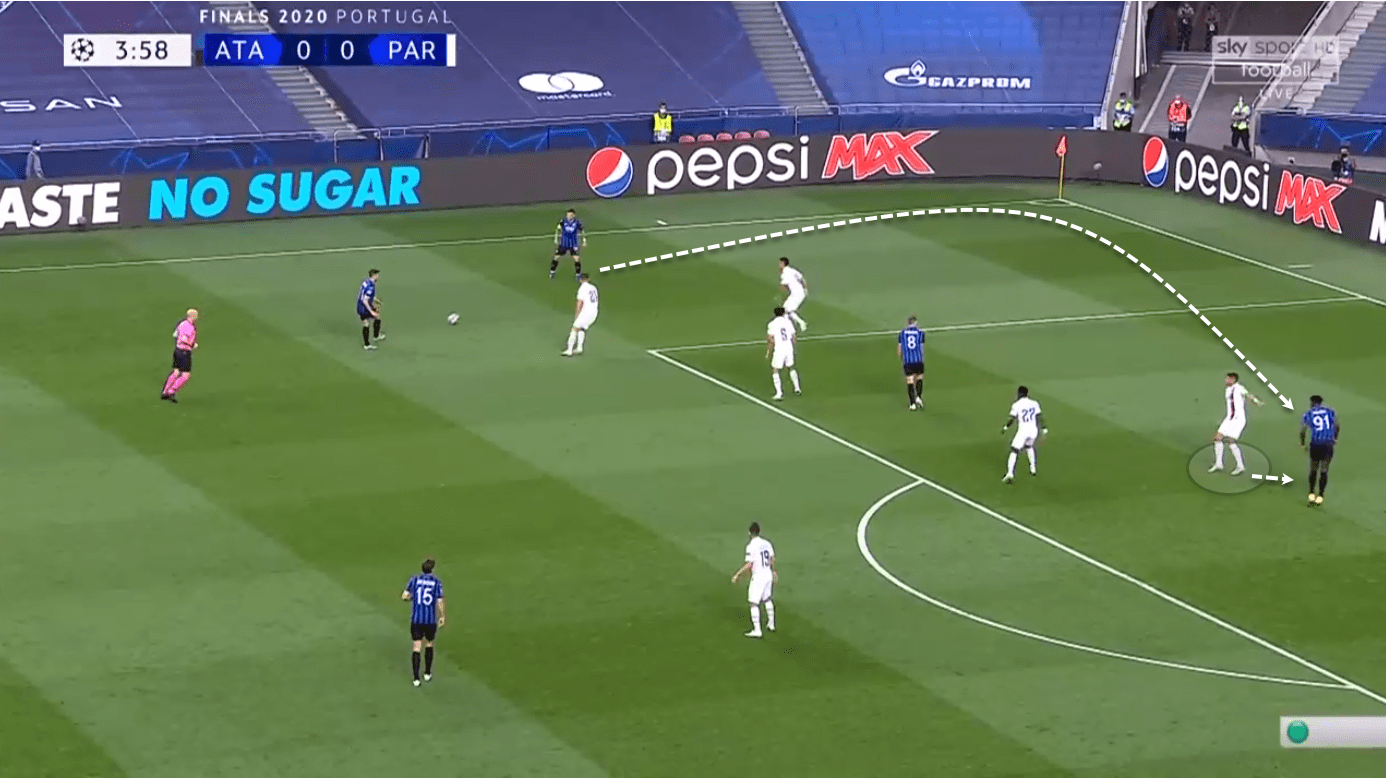
In PSG’s 4-4-2 / 4-3-3, he was paired with the more mobile Kimpembe or Marquinhos at centre-back who would give Silva the pace needed to cover the player and not allow him to be overrun. This allowed him to navigate and command his backline to move accordingly and ensure that dangers were thwarted from all sides before they happened. Having played in a 4-3-3 for the Parisian side, he has experience playing with a three-man midfield in front of him.
This makes Chelsea’s setup in midfield another factor that needs to be considered when looking at the issues at the back. A large chunk of the season saw Jorginho play as the fulcrum at the base of midfield, which meant that they lacked a pure destroyer to break up play. N’Golo Kante’s presence in midfield was missed due to a stop-start season due to injury and his inclusion in the side makes a big difference when it comes to breaking up play. The fluid midfield setup meant the centre-backs were often isolated and with marauding full-backs, there needs to be better defensive cover. Having someone with the ability to know where the danger is coming from early can alleviate a lot of the issues.
Looking at the two pass maps below, we can clearly see the difference in both midfields just from these two sample games. On the left, we have Chelsea’s game against Norwich City in the English Premier League whilst the right is a Ligue 1 game where Paris Saint-Germain faced Olympique Lyon. You can clearly see Jorginho (#5 – L) sitting further away from his centre-backs than Marquinhos (#5 – R) is, which already means there is more protection. Yes, Marquinhos is more defensive-minded, but just from the positioning alone, we can tell that PSG will have more cover in defensive situations than Chelsea.
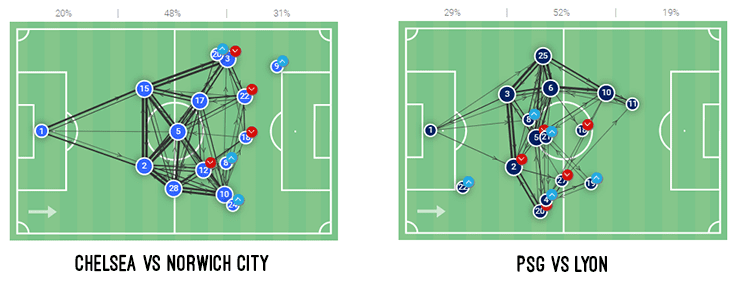
During the post-pandemic break matches, Kante was used as the defensive midfielder of choice which led to two pragmatic wins against Aston Villa and Manchester City and gave Chelsea some much needed defensive assurances. So Lampard has the player that can do the job but it’s whether he wants a ball-player or more defensive-minded player sitting in front of the back four.
While PSG had Marco Veratti, Idrissa Gueye, and Marquinhos in midfield, Chelsea do not have the same robust pairing with a combination of Jorginho, Mason Mount, Mateo Kovacic, and Kante being used. Only Kante can be considered a ball-winner of sorts and having in midfield will be essential. Marquinhos made Silva’s job a lot easier because of his ability to screen the back four and allow Silva time to position himself better. Again this comes down to the quality of the centre-back but having a competent midfield remains key.
Aerial presence
Another key area of concern was defending against set-pieces. Total Football Analysis’ Cam Meighan has written an extensive analysis of Chelsea’s set-piece woes, but in a nutshell, this is a huge area of improvement that will be needed ahead of next season. One of the main problems Chelsea faced was the inability to compete and once again anticipate player movements in set-piece situations. A major skill and advantage that Silva will bring alongside his defensive awareness is his aerial ability.
Chelsea’s defending at set-pieces has been woeful to say the least. A lot of times teams were able to get the run on their markers, especially when attacking corners. Two of Chelsea’s four centre-backs are better ball-players than physical defenders in Christensen and Tomori, while Rudiger has been bullied off the ball at times though he is a bigger player. Only Zouma can be considered a major aerial presence but has been inconsistent throughout the season.
The French centre-back is able to contest most strikers in the air and his most productive season came when he was partnered with John Terry. Terry was able to instruct and direct the young central defender and that is what is missing from this defence so far. Silva will be able to organise the team at set-pieces as well as contest duels. The former PSG captain engaged in 3.15 aerial duels per 90 minutes with a success rate of 60% which means he picked his moments and was able to beat most players aerially.
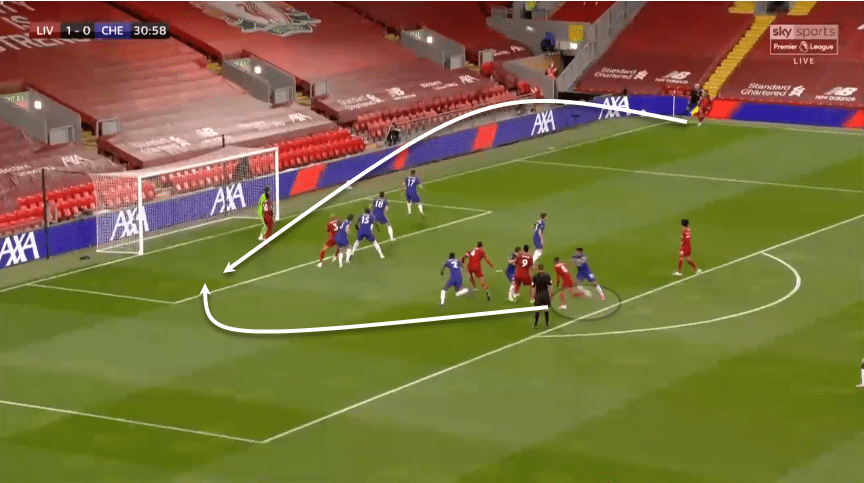
The above image shows a set-piece situation Chelsea were up against last season. This example comes from their game against Liverpool and we can immediately notice Chelsea utilising a man-to-man marking system. As the corner comes in we can see Gini Wijnaldum start to get away from his marker in Reece James.
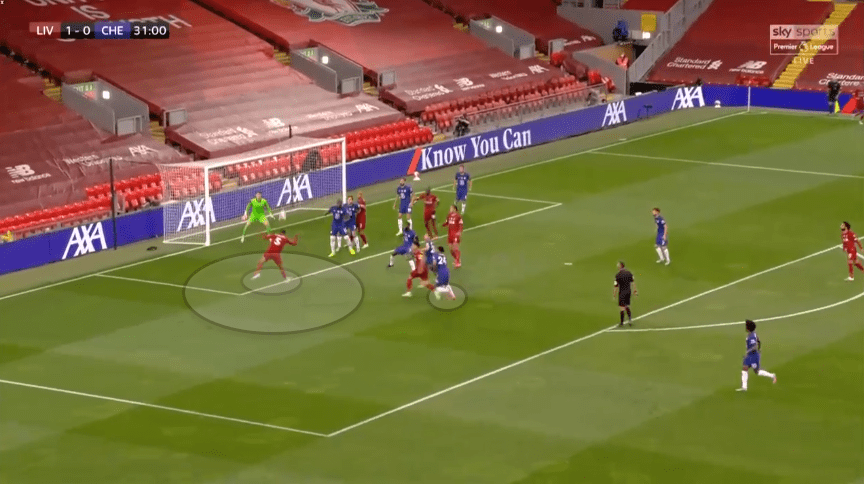
As the ball comes in, we can see Wijnaldum gets a free run and is completely unmarked with James not keeping up with his man. These sorts of issues plagued Chelsea defensively and the addition of Silva will help to properly organise the teams in these situations.
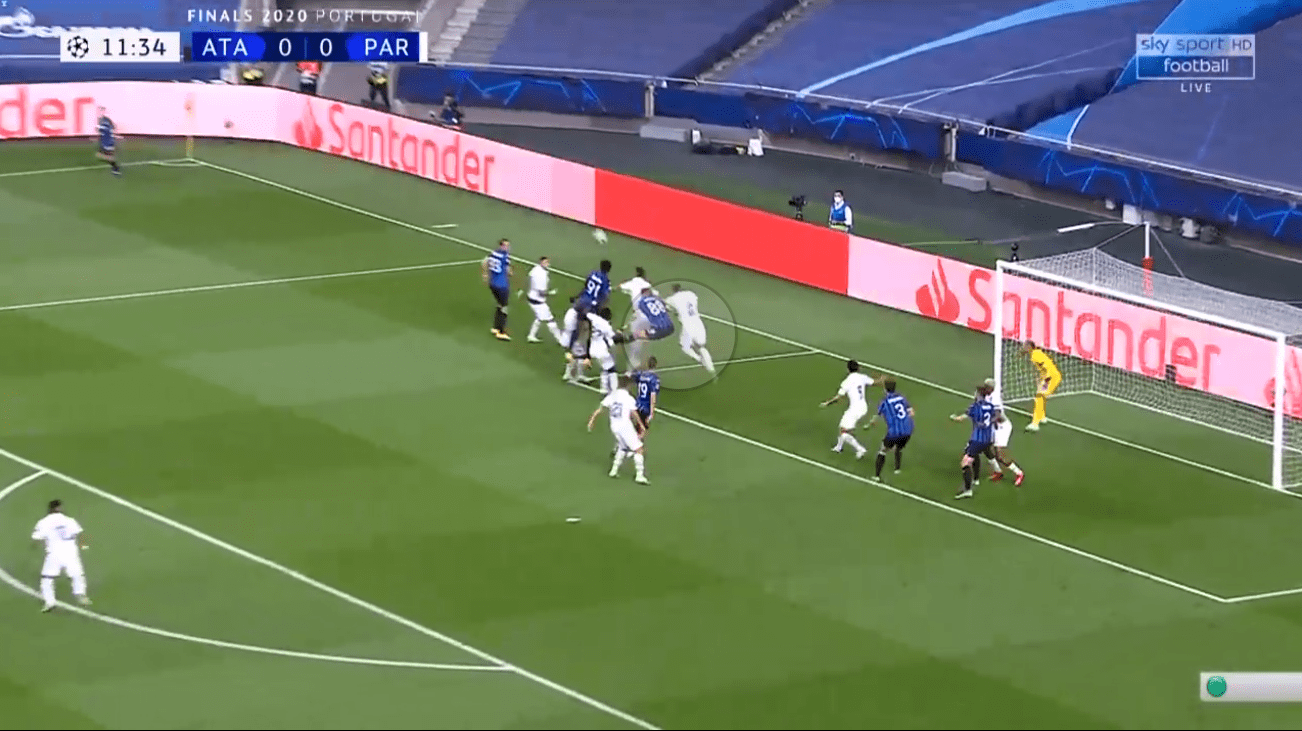
Silva should bring some more aggressiveness to Chelsea’s defending which is evident here in this example. This defensive set-piece against Atalanta sees Silva rise up higher than Mario Pasalic to win the aerial duel. This sort of aggressive defending in a crunch match is precisely the sort of leadership this defence needs.
Thiago Silva & the data
Silva was not brought into the side to sit on the bench, rather he should start. This data analysis will show us how well he does against his current and former teammates and why Lampard decided to take a gamble on a 35-year-old veteran. We’ll look at three different defensive contributions as benchmarks for Silva’s partner as the main priority other than playing out from the back is his ability to defend.
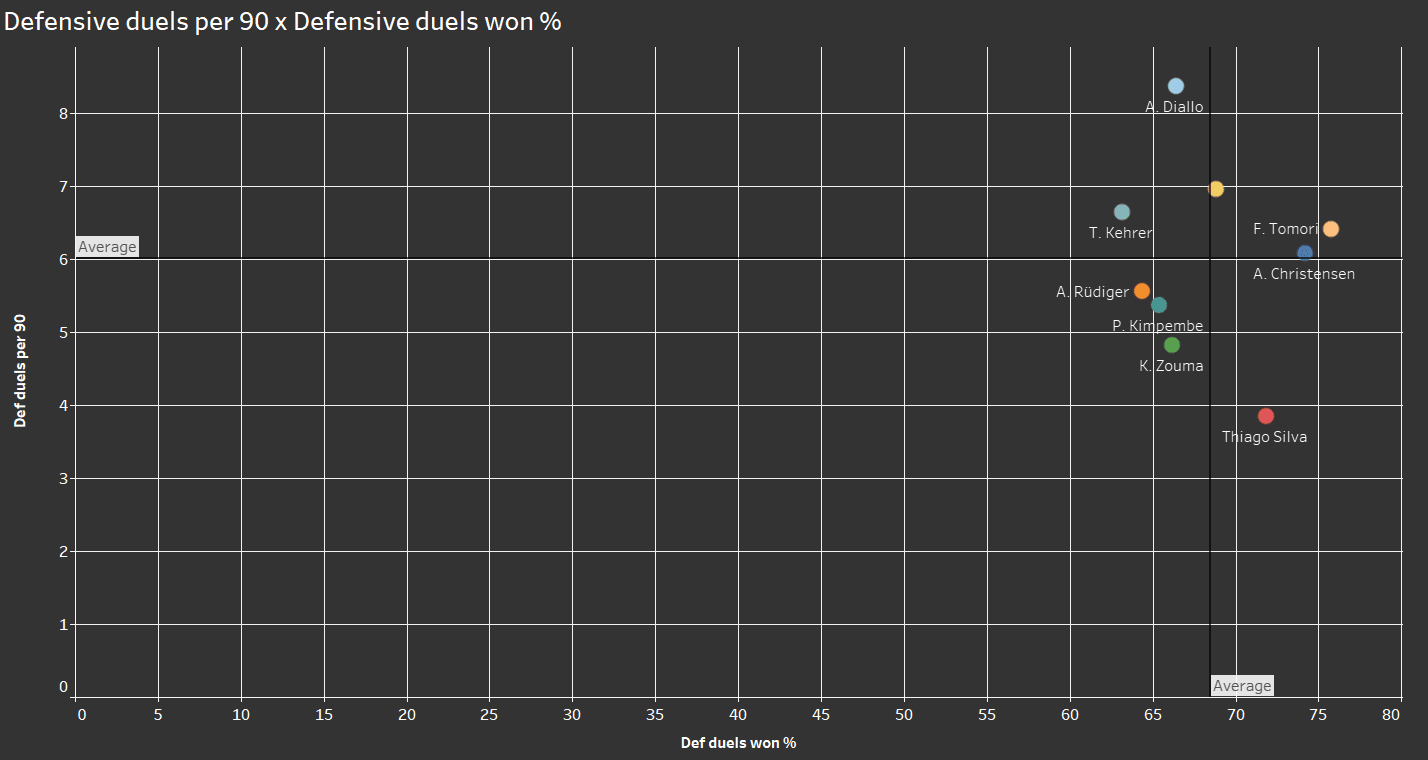
The first metric we’ll be looking at is defensive duels per 90 minutes against defensive duels won success rate. This will give us a better understanding of how well each centre-back has done when it comes to engaging and winning duels determining their ability to defend. All statistics used here are from the players’ domestic leagues respectively.
Firstly, we can see that Silva engaged in the least amount of defensive duels but has the second highest success rate after Christensen. Silva’s lower engagement rate is due to PSG’s likeliness of having the most possession in Ligue 1, thus making the defence less likely to engage in duels. However, his higher success rate means Silva is able to win most of the battles he goes into. Only Christensen and Tomori has a 70% + success rate with Zouma and Rudiger in and around Kimpembe at 62-64%.
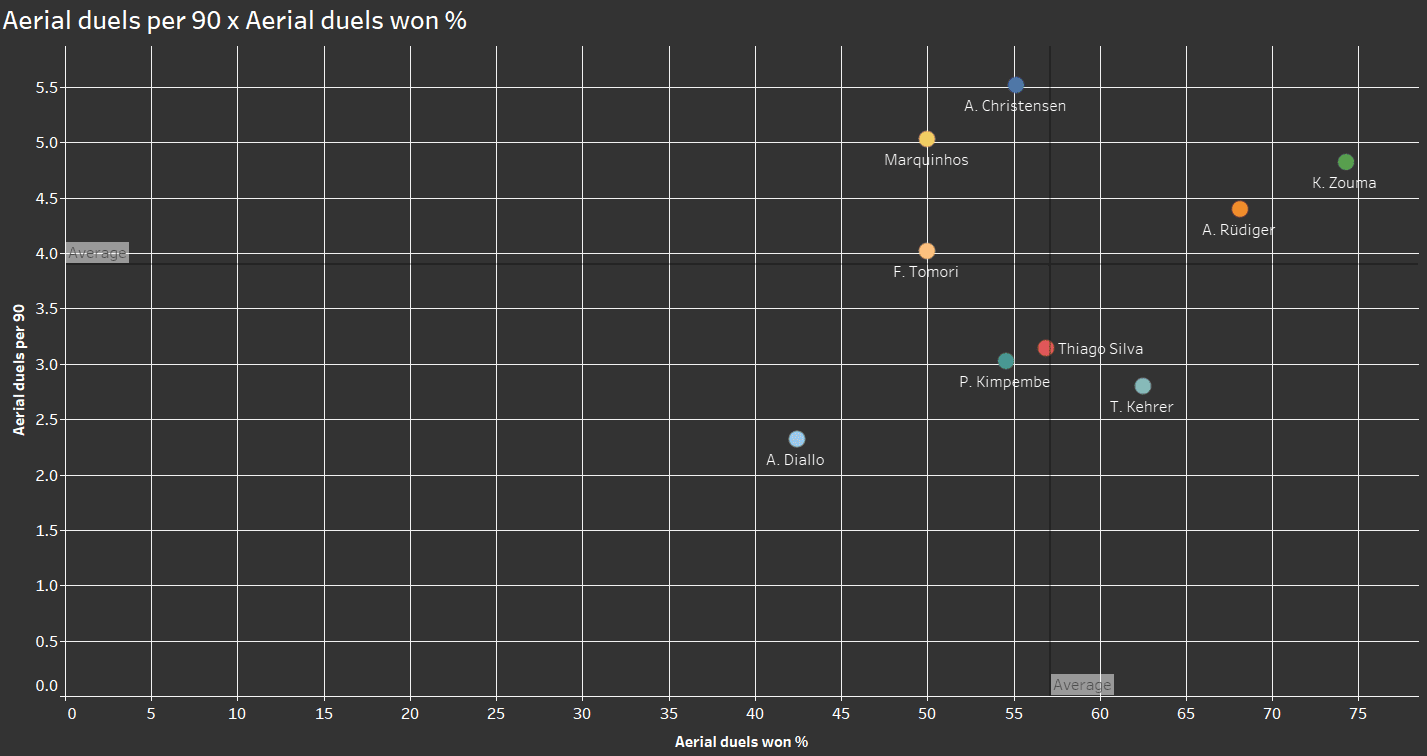
Next, we’ll analyse aerial duels and aerial duels won success rate. One of Chelsea’s pressing needs is to be able to defend set-pieces so having both central defenders be proficient in aerially will be critical. These metrics should give us a better understanding of how Silva matches up against his current and old teammates in this regard.
We can see both of Chelsea’s current centre-backs are much more successful in the air than Silva who is positioned in the middle of the pack. While he only registers a 57% success rate, Silva’s reading of the game allows him to detect danger early and should be able to add his experience in set-piece situations. Both Rudiger and Zouma are much more successful in the air but lack direction and intelligence to keep their players in check. This is where Silva should be much more successful and diligent.
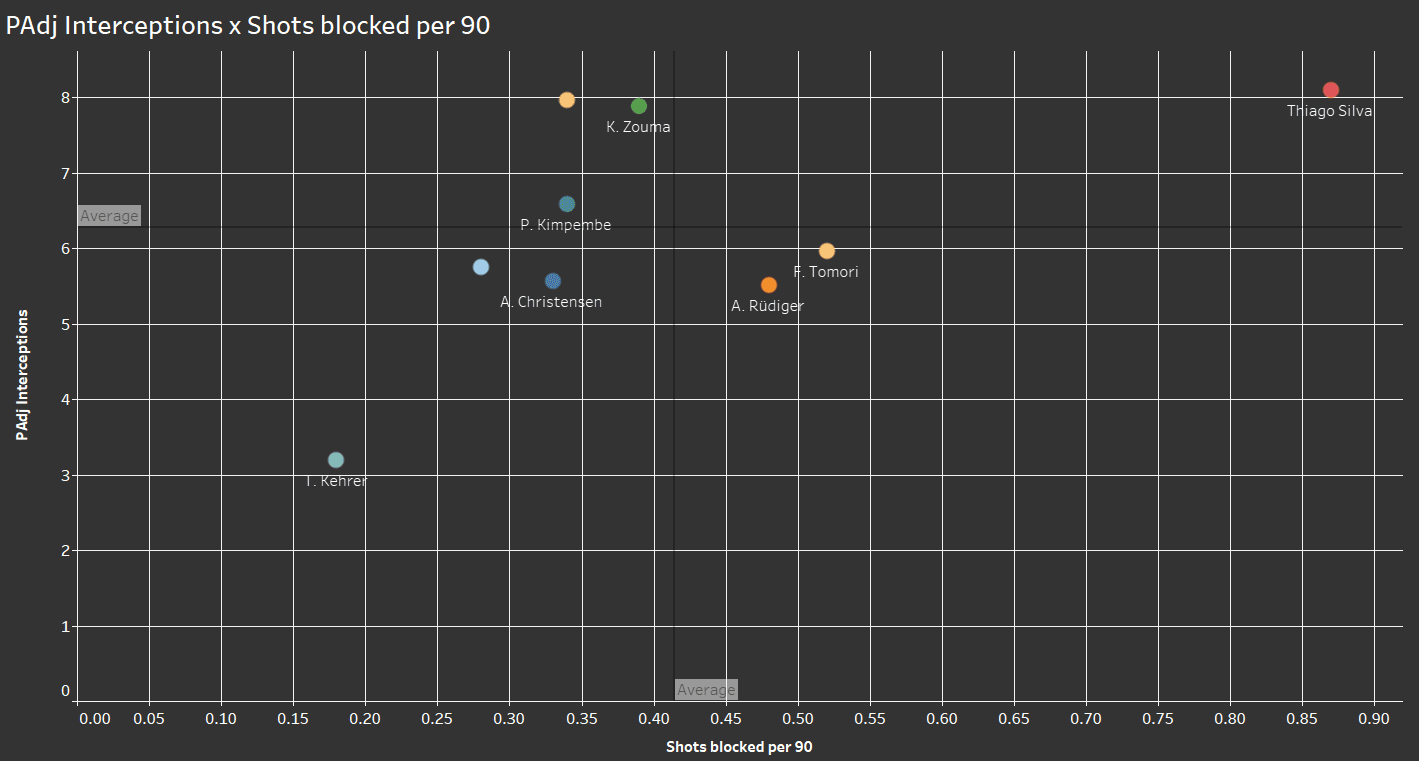
Lastly, one way to determine a central defender’s intelligence in defending is through their reading of the game. Being able to block shots and intercept passes/crosses enables us to understand how often they’re able to move into position and stop the delivery. We’ll be using possession-adjusted interceptions and shots blocked per 90 minutes to highlight this.
This is where Silva shines. As the graphic indicates, Silva averages the highest figures in both metrics meaning he’s able to read the game effectively and more frequently. Chelsea lacked this quality in all of their centre-backs last season and Silva’s arrival should alleviate the issue.
Final Remarks
To conclude this tactical analysis, we’ve seen how Silva can contribute to this Chelsea defence and inject some much-needed leadership, experience, and direction that was sorely missed for major chunks of last season. I believe he’ll need a partner with pace and passing skills around him to compensate but whoever partners Silva should improve immensely under his guidance. Silva could just be Lampard’s biggest signing ahead of some stellar names to enter Stamford Bridge.






Comments